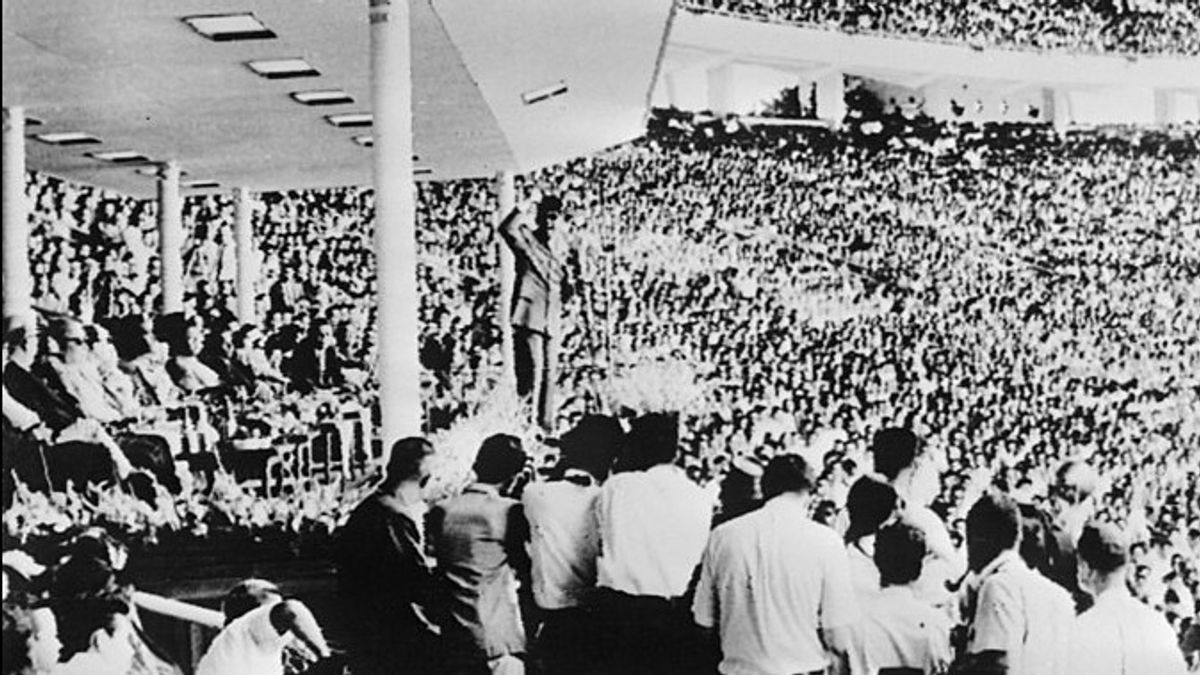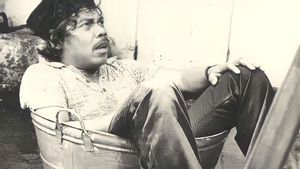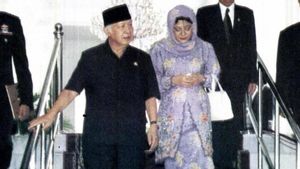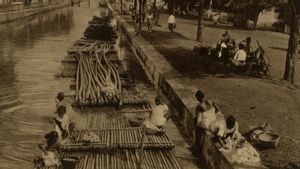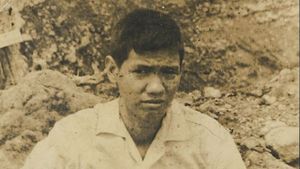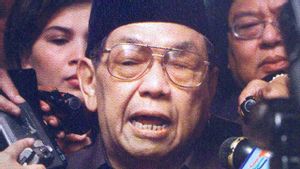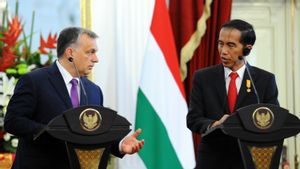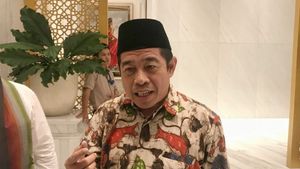JAKARTA - Soekarno likes monumental development. "Lighthouse politics" made Indonesia's name soar across the world. However, this move was often controversial. The construction of the Gelora Bung Karno (GBK) sports complex, for example, was considered unwise. A number of Betawi villages were evicted.
The celebration of the Asian Games IV encourages the capital city of Jakarta to clean up. As the host, Indonesia began to make extensive preparations from 1958 to 1962. The Indonesian president who was also the great leader of the revolution, Soekarno, stepped in.
For him, the biggest sporting event in Asia is a place for Indonesia to show off to the international world. Bung Karno wanted Jakarta to be transformed into a large and very luxurious center for sports activities.
Details, such as the location of the activity to the preparation for the construction of facilities, are directly supervised by him. Moreover, Soekarno himself is an architect, who is better known as the architect of the Indonesian state.
Bung Karno himself went down in search of a representative location for the IV Asian Games. Every day, The great father flies by helicopter around the city of Jakarta. In order to find the main location of the Asian Games center. South Jakarta was Bung Karno's choice at that time.
At first Bung Karno wanted the IV Asian Games to be held in the area around Menteng or Kebayoran Baru. The other location he chose was in Setiabudi-Karet. Bung Karno did not forget about additional options around the Lower Dam area.
This desire is in stark contrast to the choice of the Governor of Jakarta for two periods (1960–1964 and 1965–1966), Soemarno Sosroatmodjo. Instead, he prefers the Rawamangun area.

"For this reason, it is necessary to prepare adequate and representative sports facilities. Previously, the only sports facilities in Jakarta were the Ikada Stadium (short for Djakarta Athletic Association) at Medan Merdeka Square (now Monas Field). This stadium has existed since the Dutch colonial era and was used during the 2nd National Sports Week (PON) in Jakarta in 1951.”
“However, Ikada Stadium is considered less qualified for regional sporting events, such as the Asian Games. So, it is planned to build a sports facilities complex suitable for the implementation of the Asian Games. For that, it is necessary to find a new location to build the sports facilities," said Firman Lubis in the book Jakarta 1950-1970 (2018).
Bung Karno's odyssey with his proud architect, Friedrich Silaban, brought results. Senayan village was chosen by Soekarno to realize Indonesia's dream of having the best sports center in Asia.
Bung Karno intended this initiation to complete the narrative of the Jakarta development triangle package. The State Palace area as the center of government. Senayan as a sports center, and the western part of Senayan as a political space.
Regarding Soekarno's funds, don't bother. His friendship with the leader of the Soviet Union, Nikita Khrushchev became a way out. Loans of 12.5 million dollars for development then came out of the pockets of the Soviet Union. The loan is in the form of a soft loan with interest that can be paid in the long term.

Khrushchev also provided other assistance. A line of engineers and technicians of the Soviet Union was involved. Therefore, Soekarno's dream of having a sports complex as well as the grandest stadium that can accommodate 110 thousand people is one step closer to being realized.
“The close bilateral relationship is also reflected in other fields. In 1962, the Soviet Union gave scholarships to Indonesian students. It was recorded that around 700 Indonesian students studied at various universities in the red bear country. A number of Navy officers studied in Vladivostok and Leningrad."
"In addition, the cooperation in the construction of the Cilegon steel factory, the Friendship Hospital, Gelora Bung Karno, and the Farmer Statue all proved how strong the cooperation between the two countries was at that time," said Tomi Lebang in the book Sahabat Lama, Era Baru: 60 Tahun Pasang Surut Hubungan Indonesia-Rusia (Old Friend, New Era: 60 Years of Ups and Downs in Indonesia-Russia Relations), 2010.
Evictions of Betawi village

Soekarno's ambition to build GBK had to be paid dearly. The reason is that the government helped to perpetuate the eviction of Betawi villages: Senayan, Petunduan, Kebon Kelapa, and Bendungan Hilir. The eviction of the Betawi people's 300-hectare village began in 1960. The houses that were demolished and then relocated back to another place totaled 8,652.
The house was used by around 46,829 residents who were later relocated by the government to Tebet, Pejompongan, Slipi, Cikoko, and Cileduk. But based on official data those who were transferred reached 60 thousand people. All Indonesian people do not remain silent. There were criticisms and protests. However, the Indonesian government is adamant that the GBK project must be completed immediately. For the sake of the nation's dignity, he said.
“Most of the people living in Senayan are migrants from the evicted construction of Kebayoran Baru. In the 1950s, when they were evicted, they demanded that the compensation price be increased and did not want to be placed in Senayan and Kampung Pella, but the government was not willing.”
“So, some residents of Senayan have been evicted twice due to the construction. As a result, they suffered two losses, namely material losses due to inappropriate compensation and moral losses due to having to leave their homeland. In moving from Senayan to a new shelter, many residents were harmed. Harian Merdeka reported that residents only received an allowance of Rp 500, a very small amount,” explained Restu Gunawan in the book Gagalnya Sistem Kanal: Pengendalian Banjir Jakarta Dari Masa ke Masa (The Failure of the Canal System: Jakarta Flood Control from Time to Time), 2010.
The government also rejected the news of the small amount of compensation. In the language of the government, what they are doing is not eviction, but a mass displacement program. Because those whose houses were evicted were made a new housing complex. The compensation portion is also large. In fact, it even includes compensation for plants in the yard.
The government owner also did not forget to build various facilities at the relocation site. The government built no less than six mosques, 18 langgar (surau), 19 school buildings, two markets, and three polyclinics.
Likewise with road access to and from the construction site. It is possible that to this day GBK has been hailed as the greatest masterpiece ever built by the Indonesian people. But for the Betawi people, there are tears and sadness behind the majesty of GBK.
One of the popular criticisms and satire related to the evictions in Senayan had appeared in the series Si Doel Anak Sekolahan (1994–2006). The series is played by big names as well as Betawi characters, including Benjamin Sueb, Rano Karno, Mandra, and others.
This satire about Senayan is told when Kasdullah (Si Doel) has just graduated as an engineer. Doel's Father (Benyamin Sueb) had promised that when his son became an engineer, he would visit his former ancestral village.
They went by using an opelet to go to Senayan, to be precise, to the Gelora Bung Karno Main Stadium. They came there knowingly, the land they stepped on no longer belonged to them.
Even though he seemed reluctant to enter the stadium, Doel was reminded by his Father, "I just wanted to invite you to let you know that this is your ancestral land."
Then they came onto the pitch, right in front of the goal.
"This is where my house used to be," continued the Father.
"How come you still remember?" asked his wife, Doel's mother.
"Yes, remember, of course. I was born here. Well, there is a gatet tree. In there, a durian tree," said Father excitedly.
The visit had to end quickly because they were sitting in the field area while people were practicing football. And at that moment, Benjamin Sueb's iconic rant about the Indonesian National Team practicing at the Gelora Bung Karno Main Stadium, "keep practicing but no win!"
*Read other information about JAKARTA HISTORY or read other interesting articles from Detha Arya Tifada.
Other MEMORY
SEE ALSO:
The English, Chinese, Japanese, Arabic, and French versions are automatically generated by the AI. So there may still be inaccuracies in translating, please always see Indonesian as our main language. (system supported by DigitalSiber.id)
